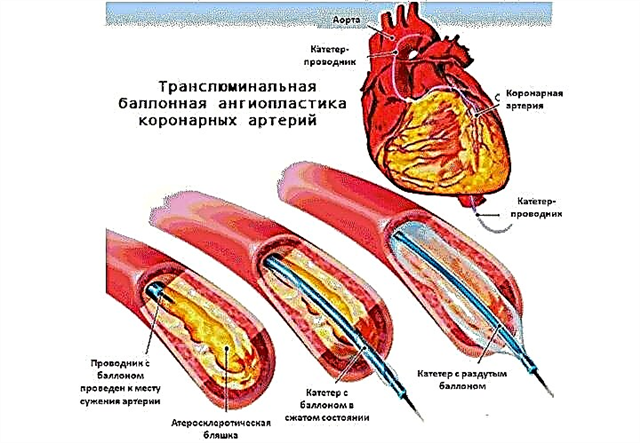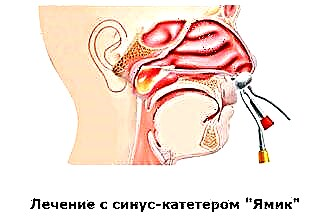What to do, how and how to treat if the lymph node is inflamed behind (under) the ear (and wider - near or near the ear) and hurts? First of all, give up heating, which can lead to the spread of infection. Then, in order to determine what and how to treat the inflamed lymph node behind the ear, it is necessary to diagnose the inflammatory process to identify the primary or secondary lymphadenitis. Secondary lymphadenitis, which has become a consequence and sign of primary diseases, is more common than primary. However, often by the time the patient learns what to do if the lymph nodes behind the ears are inflamed, it is already very difficult to diagnose the primary focus of infectious spread.
It is important, however, that the treatment of inflammation of one lymph node or several lymph nodes near and behind the ear is carried out in a comprehensive manner and concerns both the causes and consequences of the pathological process. Therefore, one of the primary tasks of analyzing the patient's condition is to differentiate the nature of the pathology (immune, infectious tumor) and identify the organ or anatomical formation that caused secondary lymphadenitis.
Diagnostics by the state of the lymphatic system
 Since the parotid lymph nodes are included in the group of the lymphatic network, which is "responsible" for the state of the organs and anatomical structures of the head, in infectious lymphadenitis, in the first place, those close to the affected lymph group are considered as a source of spread:
Since the parotid lymph nodes are included in the group of the lymphatic network, which is "responsible" for the state of the organs and anatomical structures of the head, in infectious lymphadenitis, in the first place, those close to the affected lymph group are considered as a source of spread:
- nasal cavity and paranasal sinuses,
- oral cavity and throat (tonsillitis, pharyngitis, caries, flux, inflammation of the tonsils and salivary glands),
- as well as various ear pathologies (otitis media, eustachitis, furuncle of the ear canal, inflammation of the auditory nerve, etc.).
In the form of an increase in lymph nodes in the parotid and behind the ear regions, due to the activation of the protection of the lymphatic system, infectious mumps, rubella, and acute respiratory diseases can also appear. Moreover, most often, such an increase in the nodes passes without pain in the nodular formation with the diagnosis of local lymphadenopathy.
If the lymph node itself is affected by the infected cells, then its painful inflammation occurs with the diagnosis of lymphadenitis.
When diagnosing, to identify the inflammatory process, the state of the lymph nodes is assessed according to several clinical manifestations:
- Bursting pain with a pulsating rhythm. Its occurrence is explained by the compression of the edematous tissues of the nerve receptors, the sensitivity of which increases due to biologically active substances released during the destruction of the cell. When the inflammatory process subsides, pain remains only with palpation and pressure on the "bump".
- Disruption of lymph flow processes, which leads to puffiness and swelling of the head tissues.
- Edema. It is clearly visible behind the auricle, where the skin is thin and tightly covers the underlying hard bones of the skull and tendons.
- Hyperemia, which in this case is manifested by redness of the skin over the inflamed "bump".
- A local increase in temperature with the appearance of a feeling of heat, due to an active cellular process and blood flow to the infected area.
As a differential, control or clarifying study, the study of lymph groups is carried out both for general and local indications. Ultrasound in the parotid and behind the ear areas is prescribed for suspected lymphomas (both benign and malignant), sarcomas, cancer, metastases (from the larynx, throat, tongue), tuberculosis, syphilis. In the case of an asymptomatic chronic course of the disease, ultrasound of the cervico-ear group of lymph nodes is performed for differential diagnosis. The manifestation of characteristic symptoms may become the basis for the abolition of ultrasound.
Nonspecific lymphadenitis in the parotid region, proceeding with vivid signs of inflammation, as a rule, does not imply the use of additional research methods. However, if the changes in the nodules persist for more than two months after getting rid of the underlying disease, this becomes a weighty reason for going to the doctor for additional ultrasound and CT diagnostics.
Treating inflammation
If the inflammatory process began as a result of past diseases, the elimination of the primary focus also normalizes the general condition of the lymphatic system. However, only a doctor can prescribe a treatment for inflammation and competently tell what to do, how and how to treat lymphadenitis, if the lymph nodes behind the ear (ears) are inflamed, taking into account the general symptom complex.
Conservative treatment
If a bacterial pathology is detected, therapy with broad-spectrum antibiotics (a group of sulfonamides, cephalosporins) is prescribed as a source of inflammation. To normalize the immune response, the following are additionally prescribed:
- immunomodulators,

- antihistamines to reduce the inflammatory response (including chronic),
- vitamin complexes with vitamin C that activates immune cells.
To prevent fusion of the node and surrounding tissues, electrophoresis using proteolytic enzymes is performed as a local procedure. Also, the "bump" is exposed to an ultra-high frequency electric current and a helium-neon laser. With chronic and acute serous inflammation of the lymph node, it can be treated with both UHF and applying Vishnevsky's ointment in the form of compresses to the affected area.
Surgical intervention
Surgery is indicated for purulent lymphadenitis. During the operation, pus and destroyed tissues are removed from the opened formation. Then the incision is washed with antiseptic solutions, and the capsule is sutured while maintaining a drainage system in it to remove exudate and pus. Long-term pain reactions with a pathological increase with the ineffective use of conservative methods can also be the basis for surgical intervention.
Traditional methods
What to do if the lymph node is inflamed and sore under, behind the ear, and treatment is possible only with alternative methods? Recipes for various compresses and infusions help:
- The unpeeled onion is baked in the oven until softened, after which the husk is removed from it and crushed to a state of gruel, into which a tablespoon of pharmacy tar is added. The thoroughly mixed mixture is laid out on a cloth in the form of a cake and every 3 hours is applied for 15-20 minutes to the inflamed "bump".
- The leaves of nuts, motherboard and mistletoe, mixed in equal proportions, are poured with boiling water and, after cooling, while the grass is still warm, are applied to the node for 2 hours.
- Also, in equal proportions, the leaves of mistletoe, St. John's wort, walnut, yarrow are mixed, which are poured with 200 ml of water and boiled for up to 10 minutes over low heat. A bandage soaked in a cooled broth is applied to the inflamed area at night.
- Echinacea tincture on alcohol is diluted with water (1: 2), and the bandage moistened with it is covered for 9-10 hours.




